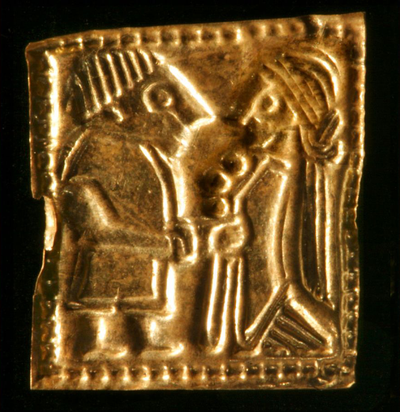
Each measuring less than a centimetre tall, and the width of a fingernail, five newly unearthed mysterious gold treasures found in Hov, Norway, could help unlock secrets of an ancient society, scientists say.
The tiny pieces - intricately detailed gold foil figures discovered during excavations of a pagan religious temple - are a rare find in Norway.
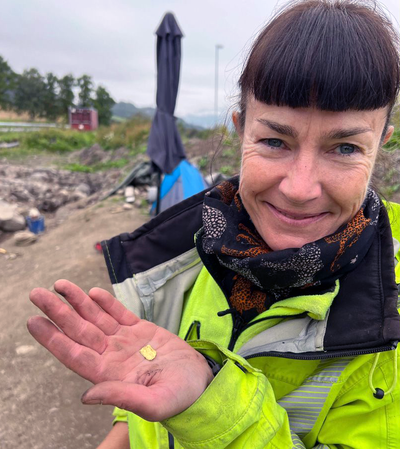
A total of 35 gold foil figures have been found at this Hov temple site.
The five most recently found were discovered during an excavation led by Kathrine Stene, an archaeologist at the Museum of Cultural History at the University of Oslo.
The remains of the Hov temple were uncovered in 1993 along with two gold figures. Subsequent digs turned up 28 more foils there over the following years, making it the site with the most Norwegian foil discoveries thus far.
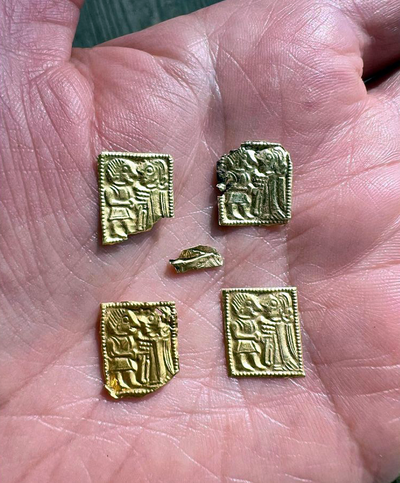
The five latest pieces uncovered were buried under the Hov temple's walls and within post holes of the structure, as if they were placed their intentionally.
This has led researchers to believe that the foils may have been an offering to the building.
"They tell us a story about the importance of the area in which they were discovered," archaeologist and adviser at the University of Oslo Nicolai Echkoff said.
"The site is found next to Mjøsa (the biggest lake in Norway), at the outlet of the river Gudbrandsalslågen.
"As such, most trade goods from the mountain regions in eastern Norway must have passed by this site before being shipped toward the shore.
"The figurines and (temple) thus confirm it is as a seat of power in the late Norwegian Iron Age," he said.
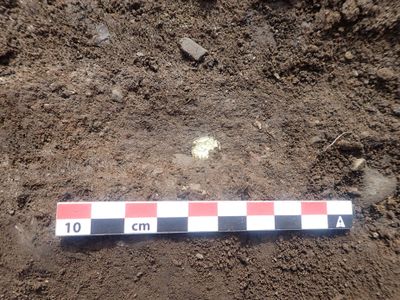
A gullgubber measures just under a centimeter and is as thin as a piece of paper.
While the foils' designs have distinct references to the Merovingian Period, a pre-Viking period between 476 and 750 AD, exactly what they were made for remains unclear.
"There are many different suggestions (as to the foils' purpose)," Ingunn Marit Røstad, an archaeologist and associate professor at the Museum of Cultural History in Oslo, said.
"They must have been placed there intentionally, so I think it's some form of sacrifice that has been done - probably in connection with some of the rituals that had been taking place inside of this pagan building, perhaps marriage rituals, since very many of these gold foils have pictures of couples on them."
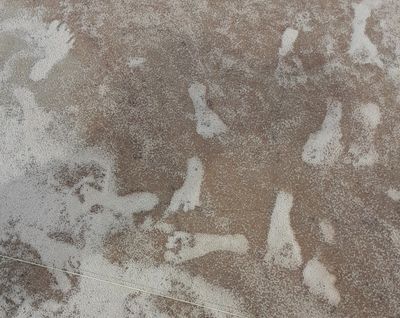
New research confirms that fossil human footprints in New Mexico are likely the oldest direct evidence of human presence in the Americas, a finding that upends what many archaeologists thought they knew about when humans arrived in the New World.
The footprints were discovered at the edge of an ancient lakebed in White Sands National Park and date back to between 21,000 and 23,000 years ago, according to research published Thursday in the journal Science.
The estimated age of the footprints was first reported in Science in 2021, but some researchers raised concerns about the dates. Questions focused on whether seeds of aquatic plants used for the original dating may have absorbed ancient carbon from the lake — which could, in theory, throw off radiocarbon dating by thousands of years.
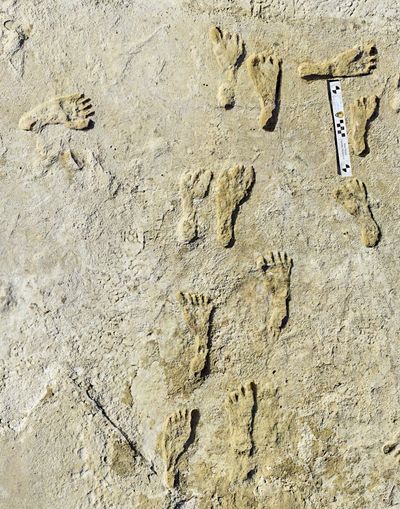
The new study presents two additional lines of evidence for the older date range. It uses two entirely different materials found at the site, ancient conifer pollen and quartz grains.
The reported age of the footprints challenges the once-conventional wisdom that humans didn't reach the Americas until a few thousand years before rising sea levels covered the Bering land bridge between Russia and Alaska, perhaps about 15,000 years ago.
"This is a subject that's always been controversial because it's so significant — it's about how we understand the last chapter of the peopling of the world," said Thomas Urban, an archaeological scientist at Cornell University, who was involved in the 2021 study but not the new one.
Thomas Stafford, an independent archaeological geologist in Albuquerque, New Mexico, who was not involved in the study, said he "was a bit skeptical before" but now is convinced.
"If three totally different methods converge around a single age range, that's really significant," he said.
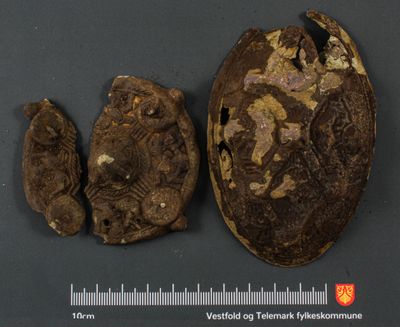
A Norwegian family hunting for a lost earring in their backyard dug up an entirely unexpected treasure - two Viking-era brooches.
The Aasvik family on the island of Jomfruland deployed a metal detector to try to find the earring but it soon detected the bronze brooches, both of which had traces of gold on them, according to a translated post on the local council's cultural heritage department's Facebook page.
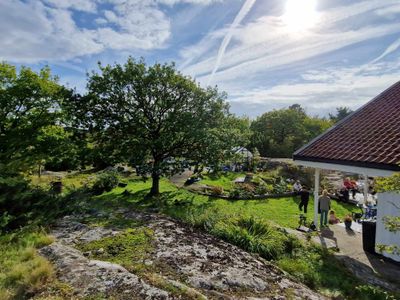
The items included "a very well-preserved bowl-shaped buckle, and another item that matches both in dating and style", the department wrote.
"We think this is a woman's grave that is preserved in the family garden, and we think she was buried there in the 800s."
They congratulated the family on doing the right thing and contacting the experts after the discovery.
It's believed to be one of the first definitive Viking-era finds on Jomfruland.
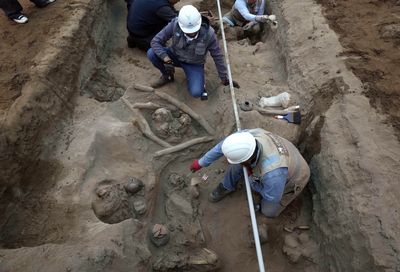
Gas company Calidda was digging a new natural gas line on the outskirts of Lima, Peru, when they dug up an unexpectedly ancient layer of the city's history.
Eight burial offerings from the pre-Inca Ychma culture have been identified by archeologists so far, according to lead archeologist Jesus Bahamonde.

The Ichma culture was formed around 1100CE and expanded through the valleys of what is now Lima until it was incorporated into the Inca Empire in the late 15th century, scholars say.
Archaeologist Roberto Quispe, who worked in the trench, said the funeral bundles probably hold two adults and six minors.
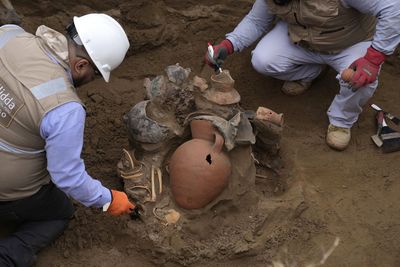
"We are recovering those leaves of the lost history of Lima that is just hidden under the tracks and streets," Bahamonde said.
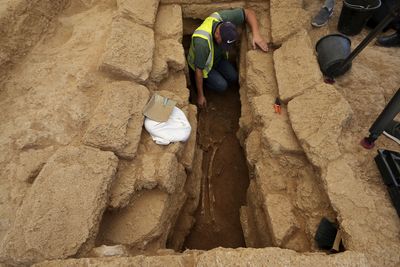
Palestinian workers in the Gaza Strip have found dozens of ancient graves, including two sarcophagi made of lead, in a Roman-era cemetery — a site dating back some 2000 years that archaeologists describe as the largest cemetery discovered in Gaza.
Workers came upon the site last year during the construction of an Egyptian-funded housing project near Jabaliya, in the northern Gaza Strip. Since then, crews have worked to excavate the 2700-square-metre site with the support of French experts.
Now, what was once an inconspicuous construction lot — surrounded by a grove of nondescript apartment buildings — has become a gold mine for archaeologists looking to understand more about the Gaza Strip.
Gaza, a coastal enclave home to some 2.3 million people, has a rich history stemming from its location on ancient trade routes between Egypt and the Levant. But a number of factors — Israeli occupation, Hamas' 16-year takeover of the territory and rapid urban growth — have conspired to endanger many of the besieged strip's archaeological treasures.
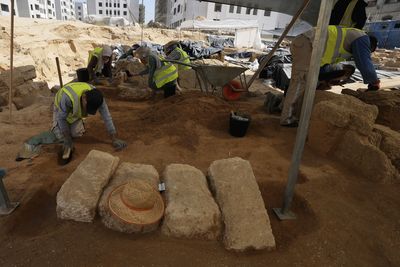
Against this backdrop, the discovery of 60 graves at the site in January marked a major finding, archaeologists say. That number has swelled to 135.
Rene Elter, a French archaeologist leading the dig, said researchers have studied over 100 of the graves.
"All of these tombs have almost already been excavated and have revealed a huge amount of information about the cultural material and also about the state of health of the population and the pathologies from which this population may have suffered," said Elter, the head of archaeology for "Intiqal," a program managed by the French nonprofit Première Urgence Internationale.
Elter pointed to the sarcophagi made of lead — one featuring ornate grape leaves, the other with images of dolphins — as exceptional finds.
"The discovery of lead sarcophagi here is a first for Gaza," he said.
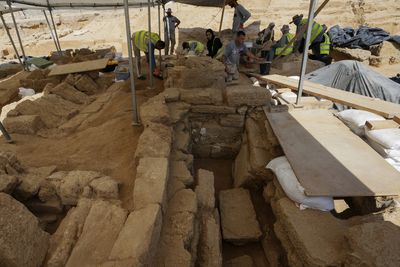
Given the rarity of the lead tombs, Palestinian archaeologists like Fadel Al-Otul suspect that social elites are buried there. Al-Otul said the cemetery probably used to be located in a city — Romans used to place cemeteries near city centers.
Alongside the sarcophagi, Elter's team is restoring unearthed skeletons and piecing together shards of clay jars.
The skeletons discovered at the site will be sent out of Gaza for additional analysis, according to Al-Otul. The remains are set to return to the Hamas-led Ministry of Antiquities and Tourism.
Elter said the territory needs a dedicated team to oversee archaeological activity in Gaza.
"The Gazans deserve to tell their stories," he said.
"Gaza boasts a plethora of potential archaeological sites, but monitoring each one, given the rapid pace of development, is no small feat."
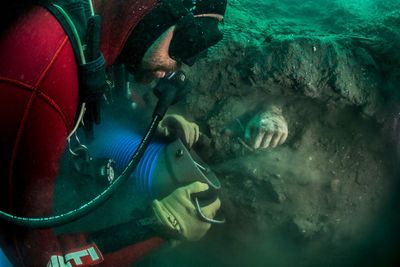
New "treasures and secrets" have been revealed at the site of a sunken temple off Egypt's Mediterranean coast, the European Institute for Underwater Archaeology (IEASM) announced in a news release Tuesday.
An underwater archaeological team, led by French marine archaeologist Franck Goddio, has made further discoveries at the site of a temple to god Amun in the ancient port city of Thonis-Heracleion in the Bay of Aboukir, the institute said.
The team investigated the city's south canal, where huge blocks of stone from the ancient temple collapsed "during a cataclysmic event dated to the mid-second century BC," the institute said.
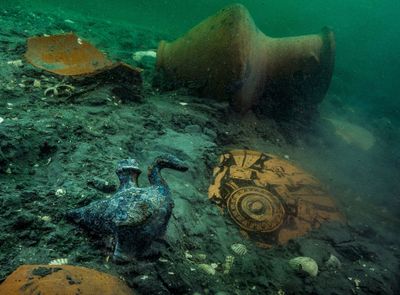
The temple to god Amun was where pharaohs came "to receive the titles of their power as universal kings from the supreme god of the ancient Egyptian pantheon," it said.
"Precious objects belonging to the temple treasury have been unearthed, such as silver ritual instruments, gold jewelry and fragile alabaster containers for perfumes or unguents," IEASM said.
"They bear witness to the wealth of this sanctuary and the piety of the former inhabitants of the port city."
The archaeological excavations, conducted jointly by Goddio's team and the Department of Underwater Archaeology of the Ministry of Tourism and Antiquities of Egypt, revealed underground structures "supported by very well-preserved wooden posts and beams dating from the 5th century BC," the institute said.
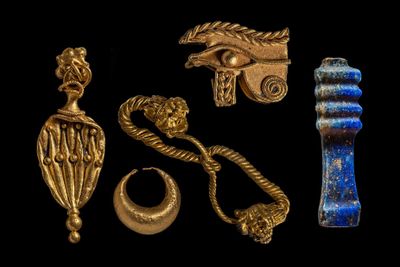
"It is extremely moving to discover such delicate objects, which survived intact despite the violence and magnitude of the cataclysm," said Goddio, who is president of IEASM and director of excavations.
The discoveries were made possible thanks to the development and use of new geophysical prospecting technologies that can detect cavities and objects "buried under layers of clay several metres thick," the institute said.
The remains of Thonis-Heracleion are now located under the sea, 7km from the present coast of Egypt, IEASM said. The city was for centuries Egypt's largest port on the Mediterranean before the founding of Alexandria by Alexander the Great in 331 BC.
"Rising sea levels and earthquakes followed by tidal waves triggering land liquefaction events, caused a 110 square kilometre portion of the Nile delta to totally disappear under the sea, taking with it the city of Thonis-Heracleion," the institute said.
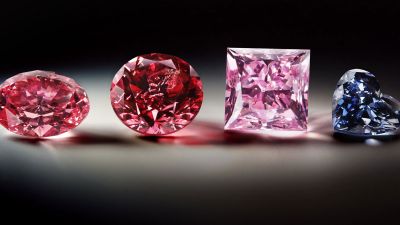
Pink diamonds are extremely rare and coveted — the now-closed Argyle diamond mine in Western Australia has been the source of 90 per cent of the coloured gemstones. Polished pink specimens of the highest grade can sell for tens of millions of dollars. But a discovery made in the same area may help reveal new deposits of the jewels, researchers say.
Scientists studying the Argyle diamond deposit said they now have a better understanding of the geological conditions necessary for pink diamonds and other color varieties to form, according to a study published today in the journal Nature Communications.
Using lasers to analyse minerals and rocks extracted from the Argyle deposit, the researchers found that the pink diamond-rich site formed during the breakup of an ancient supercontinent, called Nuna, about 1.3 billion years ago.
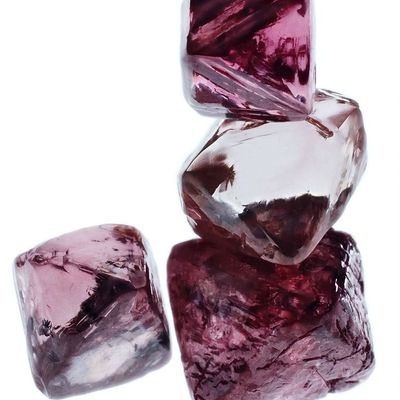
"While the continent that would become Australia didn't break up, the area where Argyle is situated was stretched, including along the scar, which created gaps in the Earth's crust for magma to shoot up through to the surface, bringing with it pink diamonds," said lead study author Dr Hugo Olierook, a research fellow at Curtin University's John de Laeter Centre in Perth, in a news release.
Most diamond deposits are found in the middle of ancient continents — within volcanic rocks that have rapidly transported diamonds from deep inside Earth's interior to the surface.
However, for diamonds to turn pink or red, they must be subjected to intense forces from colliding tectonic plates, which twist and bend their crystal lattices. Most brown diamonds are also formed in this manner.
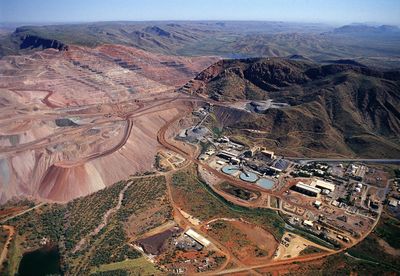
At Argyle (pictured), this process occurred around 1.8 billion years ago when Western Australia and Northern Australia collided, turning the once-colorless diamonds pink hundreds of miles below Earth's crust.
The authors proposed that the breakup of Nuna may have reopened the old juncture that the collided continents left behind, allowing diamond-bearing rocks to travel through this region to form the large diamond deposit.
This chain of events, according to the study, suggested that the junctures of ancient continents may be important for finding pink diamonds — and may guide exploration for other deposits.
"Most diamond deposits have been found in the middle of ancient continents because their host volcanoes tend to be exposed at the surface for explorers to find," Olierook said.
"Argyle is at the suture of two of these ancient continents, and these edges are often covered by sand and soil, leaving the possibility that similar pink diamond-bearing volcanoes still sit undiscovered, including in Australia."
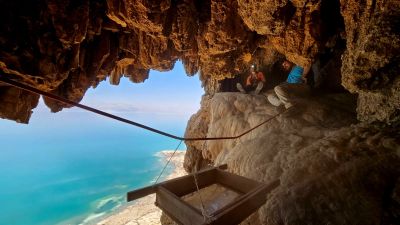
Researchers were left "rubbing their eyes" in disbelief after stumbling on an incredible treasure inside a cave in Israel's 'En Gedi Nature Reserve.
Inside, the Israel Antiquities Authority said, were four "excellently preserved" Roman swords, each about 1900 years old.
The initial find was a complete accident after researchers visited the cave to photograph inscriptions.